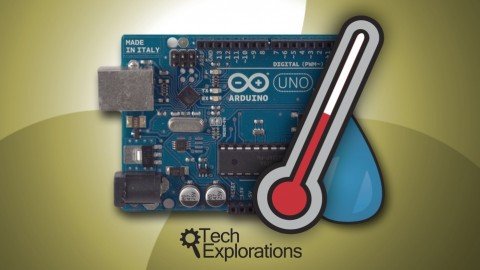
Last updated 10/2019
MP4 | Video: h264, 1280×720 | Audio: AAC, 44.1 KHz
Language: English | Size: 1.47 GB | Duration: 4h 54m
A perfect start for the new maker: learn by creating a gadget that posts your environment data to a Web logging service.
What you’ll learn
Make simple circuits based on the Arduino board
Acquire data from sensors and display them on an LCD screen
Upload sensor data to a free cloud logging service and visualise it in a dashboard
Understand the basics of programming for microcontrollers
Requirements
The basics of electricity, like voltage, current, resistance.
Description
This course is designed for beginner makers. I will help you get started with the basics of creating circuits with the Arduino prototyping board, and by the end of this course you will have an Internet-connected home environment monitoring gadget, build with your own hands!
The only prerequisite is a basic understanding of concepts like voltage, current and resistance, and ability to download and install software on your computer. A very basic understanding of programming is a bonus, but not absolutely necessary.
Along the way, you will learn about programming, sensors, and communications.
The course is split in three parts:
Part 1 is an introduction, which will gently help you create your first circuit and open your appetite for more.
Part 2 contains a primer on making with the Arduino, focusing on the Integrated Development Environment and the sketching language.
Part 3 is about making JING. JING (not an acronym!) is the environment monitoring system that you will put together piece by piece, and line by line.
If learning by making sounds like the way to go, then this course is for you!
Materials:
To fully take advantage of this course, you will need (all of these are easily sourced from Ebay):
1) An Arduino (I suggest a genuine Arduino Uno)
2) A photoresistor
3) A DHT22 temperature and humidity sensor
4) A BMP085 barometric sensor breakout
5) A 16×2 LCD screen based on the Hitachi HD44780 driver (or compatible, these are very common)
6) A potentiometer
7) Assorted resistors
8) A small breadboard
9) Lot’s of breadboard wires.
Password/解压密码www.tbtos.com